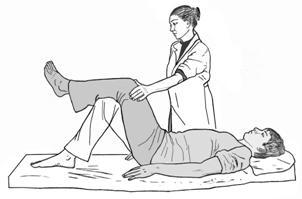
Weeks and sometimes months of rest and treatment may be required to cure shin splints. Pain occurring in the shin bone (tibia) may become a nagging and untreated problem for many athletes and especially runners, dancers, and even those in military training. The muscles, tendons and bone tissue located in the front of the calf often become overworked and swollen from increased activity and constant use. During physical activity, this region of the body seems to take the brunt of the workout and is left throbbing and aching.
People with flat feet are also more prone to developing shin splints because of the way the arches fall during impact. Also, weakness in the core and hips can affect this area as well. Sticking to the same surface while performing exertional activities will lower your risk of developing shin splints.
If you have already developed shin splints, do not worry. Many times shin splints often heal naturally, on their own. However, if your shin splints are not going away, here are seven simple ways to combat this nagging and painful ailment.
1. Rest. Giving your body time to heal is very important when curing shin splints. Stopping all physical activity may be an issue for energetic individuals, but exercises that involve little to no impact on the lower legs can be performed. These activities may include things like swimming, biking, and core exercises. All of these may be beneficial to changing your workout and strengthening a weak core.
2. Ice. Putting ice on your shins will help reduce the swelling and give you immediate relief to the area. This treatment should be performed for 20 to 30 minutes every couple of hours for 2 to 3 days. Providing ice to this area will help with pain and inflammation, making the transition back to physical activity sooner, rather than later.
3. Anti-Inflammatory Medicine. NAISDs such as ibuprofen, naproxen, or aspirin may help reduce the inflammation caused by shin splints. These should be used occasionally and at your doctor's recommendation.
4. Invest in Orthotics. Often podiatrists will make custom orthotics. However, if you are looking for a cheaper option to treat this aching pain, adding store-bought orthotic to your footwear can greatly reduce the pain felt while exercising. Orthotics are great for people with flat feet-they provide structure to those falling arches and give your feet freedom from the pressure felt during exercise.
5. Try Range-of-Motion Exercises. Sometimes pain felt in the shin stems from a muscle located above the tibia, such as weak hips or hamstrings. Activing the joints and muscles in areas in the upper leg may improve the pain felt in the lower region as well. Everything must work together while completing workouts, so it very important to take care of your entire body.
6. Consider a Compression Sleeve. Wearing a neoprene sleeve on your calf may give your leg the support needed to complete exertional activities. Wearing this material on the lower leg can help the muscle feel warm and aide in movement.
7. Physical Therapy. Physical therapists use different exercises to ease the symptoms of shin splints and take pressure off your lower legs. Physical therapists also may use external treatments to treat the pain that involve scrapping and massaging the affected area.
These seven treatments can help with the pain and other symptoms associated with shin splints. As with any type of symptom, if your shin splints do not go away after an extended period of time, it is advisable to seek help from a qualified physician. It is important not to rush this healing process, as it can take several months to fully resolve this pain. Before stepping back onto the court or track, make sure to perform a test jog, run, or sprint without pain.
Leave a Comment